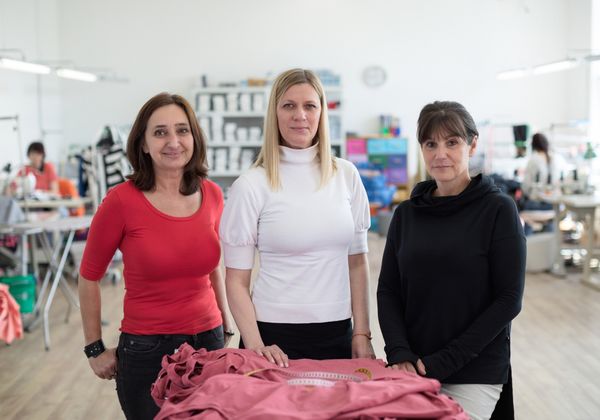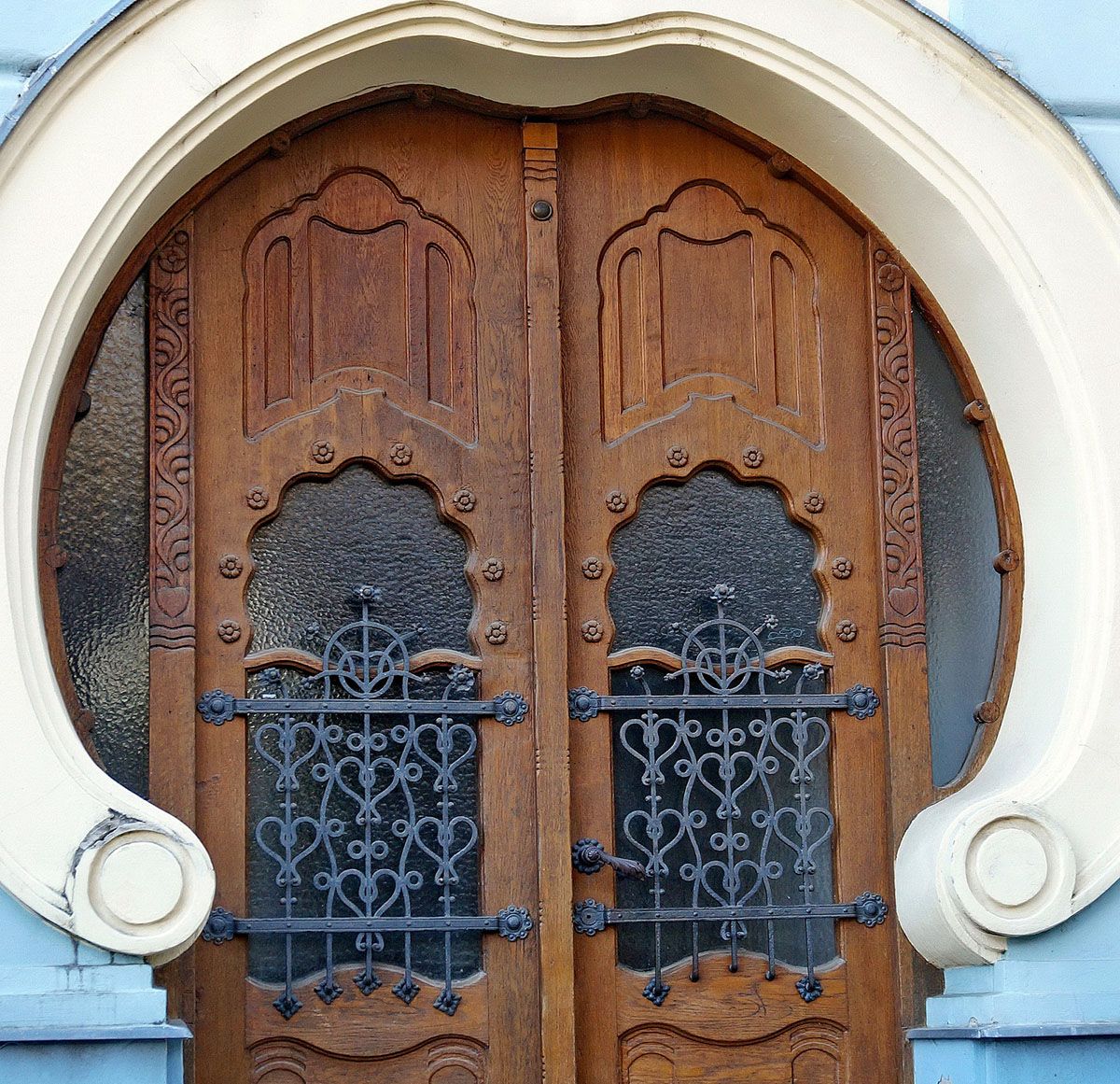Many exciting stories begin this way: in front of the entrance, checking the magical gate. What do these ornate doors hide? Architectural masterpieces, implementations of individual ideas. Legends of buildings begin and then unfold here. Now we, too, tell the story through five beautiful gates, selected from churches and residential houses in Eastern Europe.
The Church of St. Elizabeth | Slovakia
Due to the special and eye-catching color of the walls of the church, the Church of St. Elizabeth, often called the Blue Church, is one of the most outstanding works of Ödön Lechner and a beautiful example of Hungarian Art Nouveau. The church is decorated with Zsolnay mosaics, and above the main gate the mosaic image of Saint Elizabeth shines.
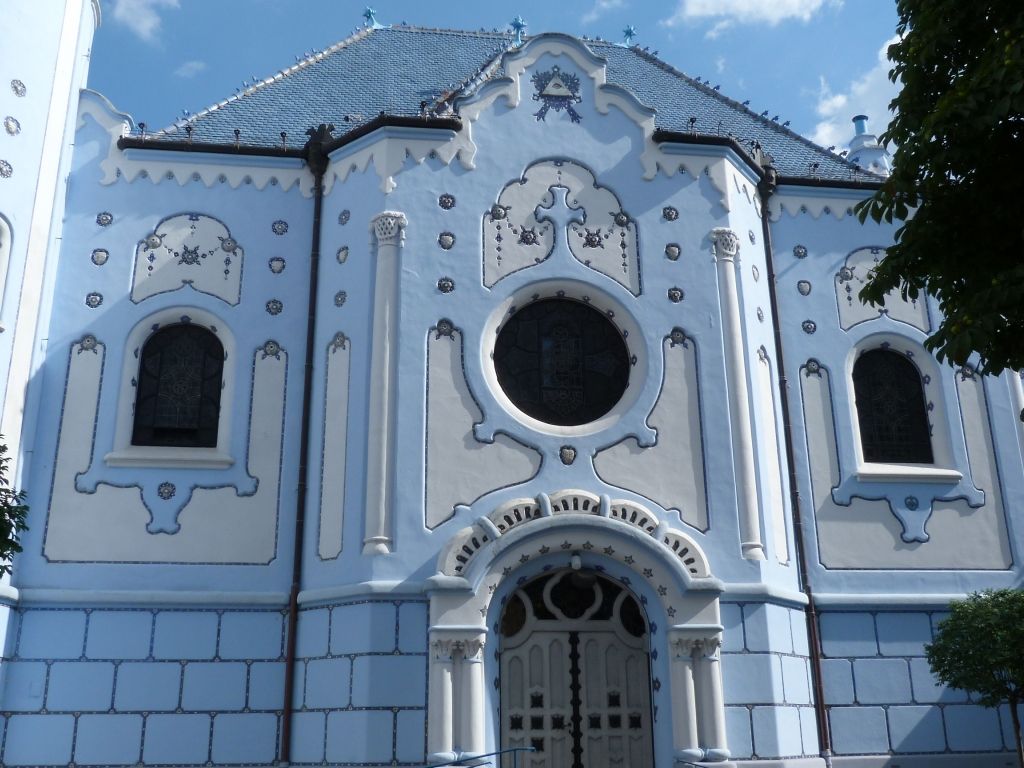
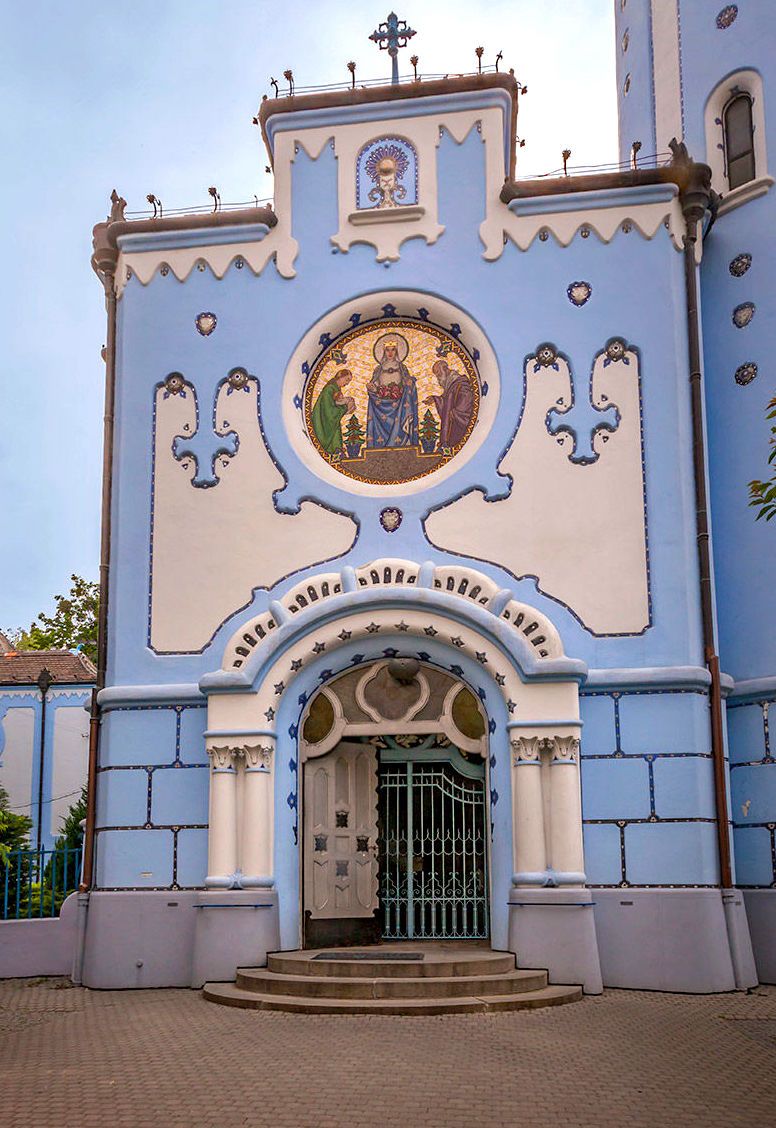
Hodek apartment building | Czech Republic
Perhaps the most beautiful Cubist building in Prague is the Hodek apartment building, built in 1913-14 according to the plans of the Czech architect Josef Chochol. The bustling building and its surface become even more characteristic when exposed to sunlight, and its entrances are also not disappointing, especially when compared to other apartment buildings of the age.
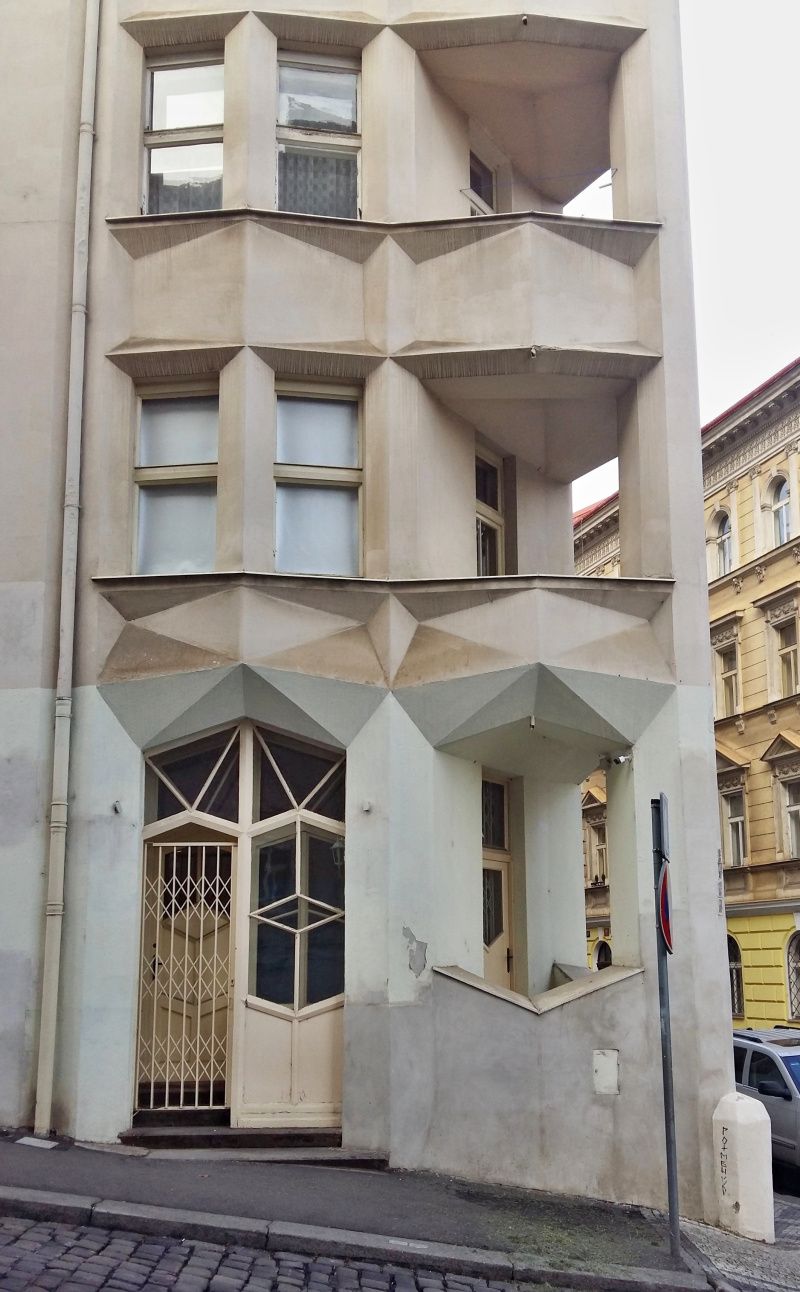

Kozma Street Israelite Cemetery, Schmidl mausoleum | Hungary
The Schmidl mausoleum is a joint work of Béla Lajta and Ödön Lechner, built for the Schmidl family in 1903. The façades are covered with blue ceramics with plant ornaments and are also decorated with plant mosaics, while the front door is made of iron.

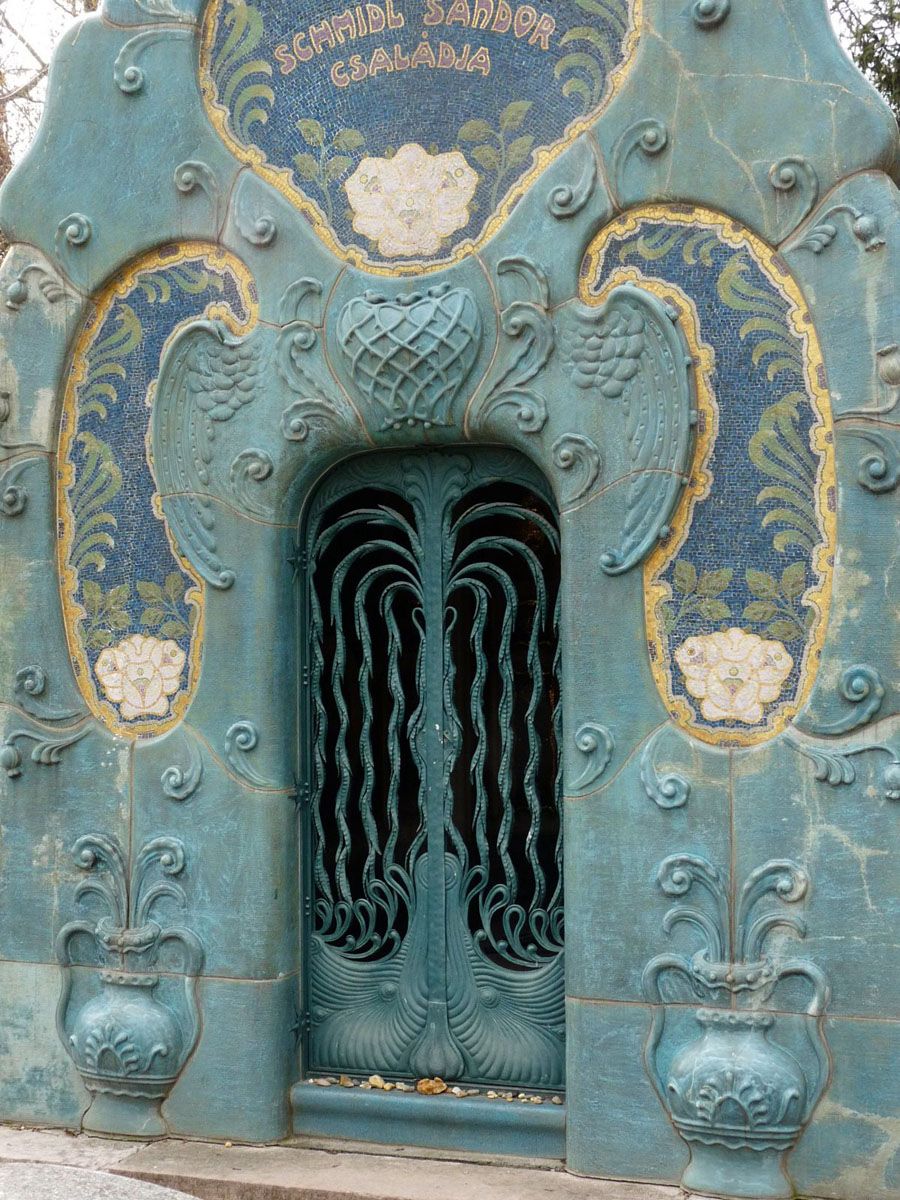

Orthodox Monastery of St. Nicholas | Serbia
The monastery is located in Grabovac, a Serbian village. Not far from the monastery there is also a chapel and a spring, the water of which has a healing power according to the traditions. The building deserves a place on the list because of its vibrant color combination, pattern and, of course, beautiful entrance.
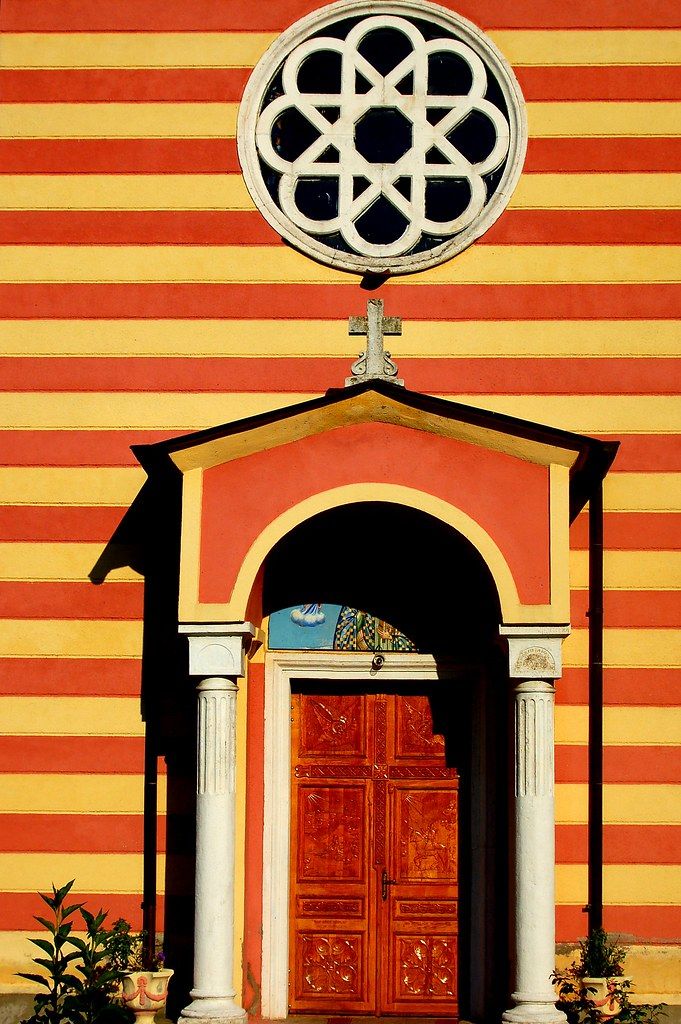
Gellért Hill studio house | Hungary
The plans of the late Art Nouveau and somewhat eclectic studio house on Gellért Hill were made by the painter-architect Gyula Kosztolányi-Kann. The house was really brought to life by painters, sculptors and other artists: they both created and lived in it. The dilapidated building was renovated in 2002, so the house today preserves the stories of its artists in good condition.
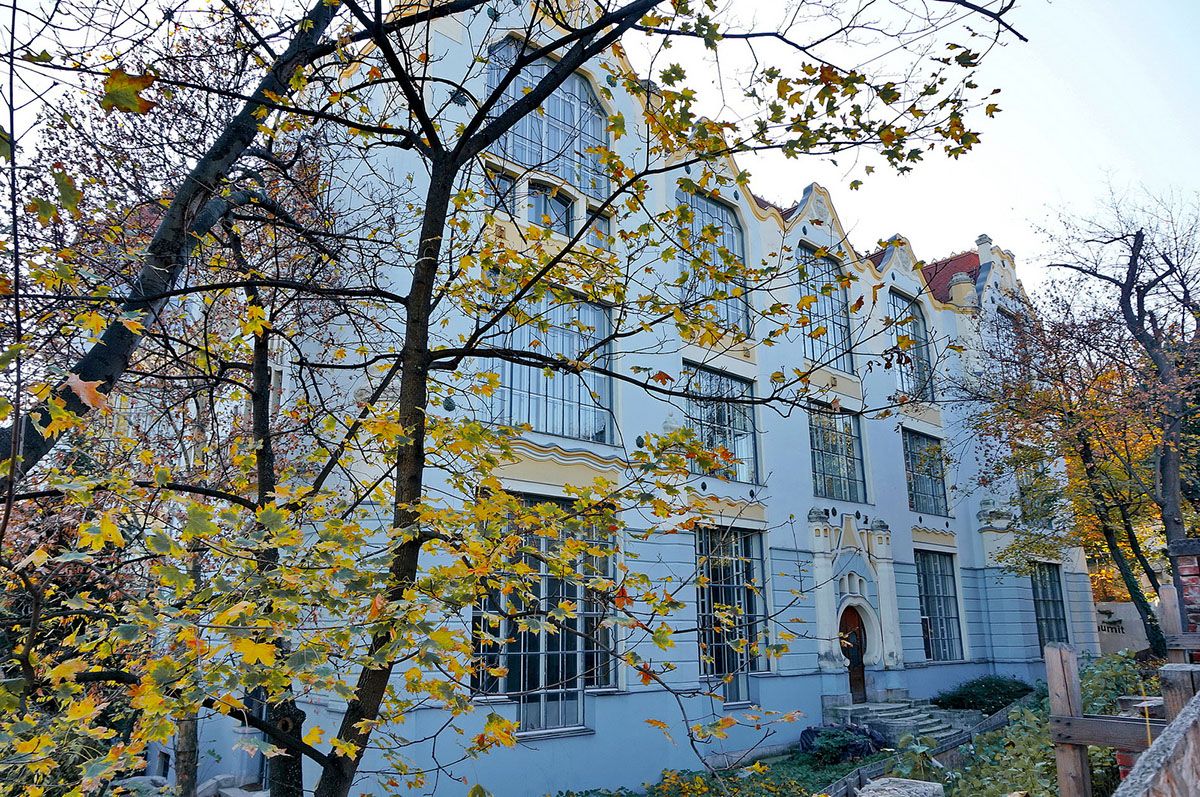


Gen Z Italian elegance | Orazio’s

HIGHLIGHTS | About adults for children
